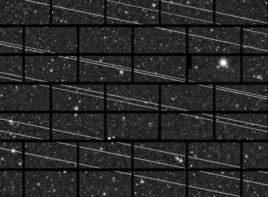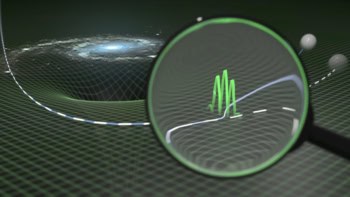
The European Space Agency (ESA) has released a spectacular image of an Einstein ring – a circle of light formed around a galaxy by gravitational lensing. Taken by the €1.4bn Euclid mission, the ring is a result of the gravitational effects of a galaxy located around 590 million light-years from Earth.
Euclid was launched in July 2023 and is currently located in a spot in space called Lagrange Point 2 – a gravitational balance point some 1.5 million kilometres beyond the Earth’s orbit around the Sun. Euclid has a 1.2 m-diameter telescope, a camera and a spectrometer that it uses to plot a 3D map of the distribution of more than two billion galaxies. The images it takes are about four times as sharp as current ground-based telescopes.
Einstein’s general theory of relativity predicts that light will bend around objects in space, so that they focus the light like a giant lens. This gravitational lensing effect is bigger for more massive objects and means we can sometimes see the light from distant galaxies that would otherwise be hidden.
Yet if the alignment is just right, the light from the distant source galaxy bends to form a spectacular ring around the foreground object. In this case, the mass of galaxy NGC 6505 is bending and magnifying the light from a more distant galaxy, which is about 4.42 billion light-years away, into a ring.
Studying such rings can shed light on the expansion of the universe as well as the nature of dark matter.
Euclid’s first science results were released in May 2024, following its first shots of the cosmos in November 2023. Hints of the ring were first spotted in September 2023 when Euclid was being testing with follow-up measurements now revealing it in exquisite detail.



